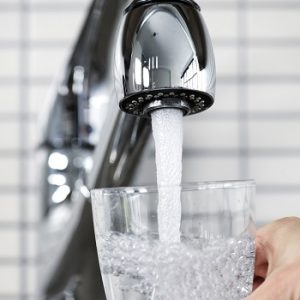
More evidence that low-calorie sweeteners are bad for your health
Studies show that artificial sweeteners can raise the risk of hypertension, metabolic syndrome, type 2 diabetes and heart disease, including stroke.

Health News — A toxic cocktail of chemical pollutants in US drinking water could result in more than 100,000 cancer cases, according to a new peer-reviewed.
The study from Environmental Working Group is the the first to conduct a cumulative assessment of cancer risks due to 22 carcinogenic contaminants found in drinking water nationwide.
In a paper published in the journal Heliyon, EWG scientists used a novel analytical framework that calculated the combined health impacts of carcinogens in 48,363 community water systems in the US. This assessment does not include water quality information for the 13.5 million American households that rely on private wells for their drinking water.
“Drinking water contains complex mixtures of contaminants, yet government agencies currently assess the health hazards of tap water pollutants one by one,” said Sydney Evans, lead author of the paper and a science analyst at EWG. “In the real world, people are exposed to combinations of chemicals, so it is important that we start to assess health impacts by looking at the combined effects of multiple pollutants.”
This cumulative approach is common in assessing the health impacts of exposure to air pollutants but has never before been applied to a national dataset of drinking water contaminants. This model builds on a cumulative cancer risk assessment of water contaminants in the state of California and offers a deeper insight into national drinking water quality. As defined by US government agencies, the calculated cancer risk applies to a statistical lifetime, or approximately 70 years.
Most of the increased cancer risk is due to contamination with arsenic, the byproducts of chemical disinfectants and radioactive elements such as uranium and radium. Water systems with the highest risk tend to serve smaller communities and rely on groundwater. These communities often need improved infrastructure and resources to provide safe drinking water to their residents. However, large surface water systems contribute a significant share of the overall risk due to the greater population served and the consistent presence of disinfection byproducts.
The number of cancer cases from water contamination is small compared with the total number of cancer cases in the US. Nevertheless these are cancers that could be prevented with better regulation,
“The vast majority of community water systems meet legal standards,” said Olga Naidenko, Ph.D., EWG’s vice president for science investigations. “Yet the latest research shows that contaminants present in the water at those concentrations – perfectly legal – can still harm human health.”
“We need to prioritize source water protection, to make sure that these contaminants don’t get into the drinking water supplies to begin with,” Naidenko added.
Those who are concerned about chemicals in their tap water can install a water filter to help reduce their exposure to contaminants. Filters should be targeted to the specific contaminants detected in the tap water.

Please subscribe me to your newsletter mailing list. I have read the
privacy statement